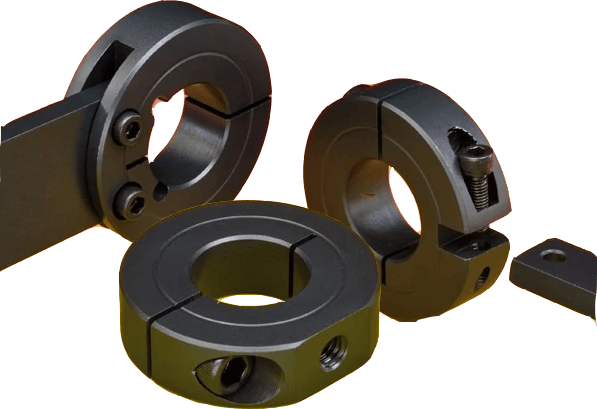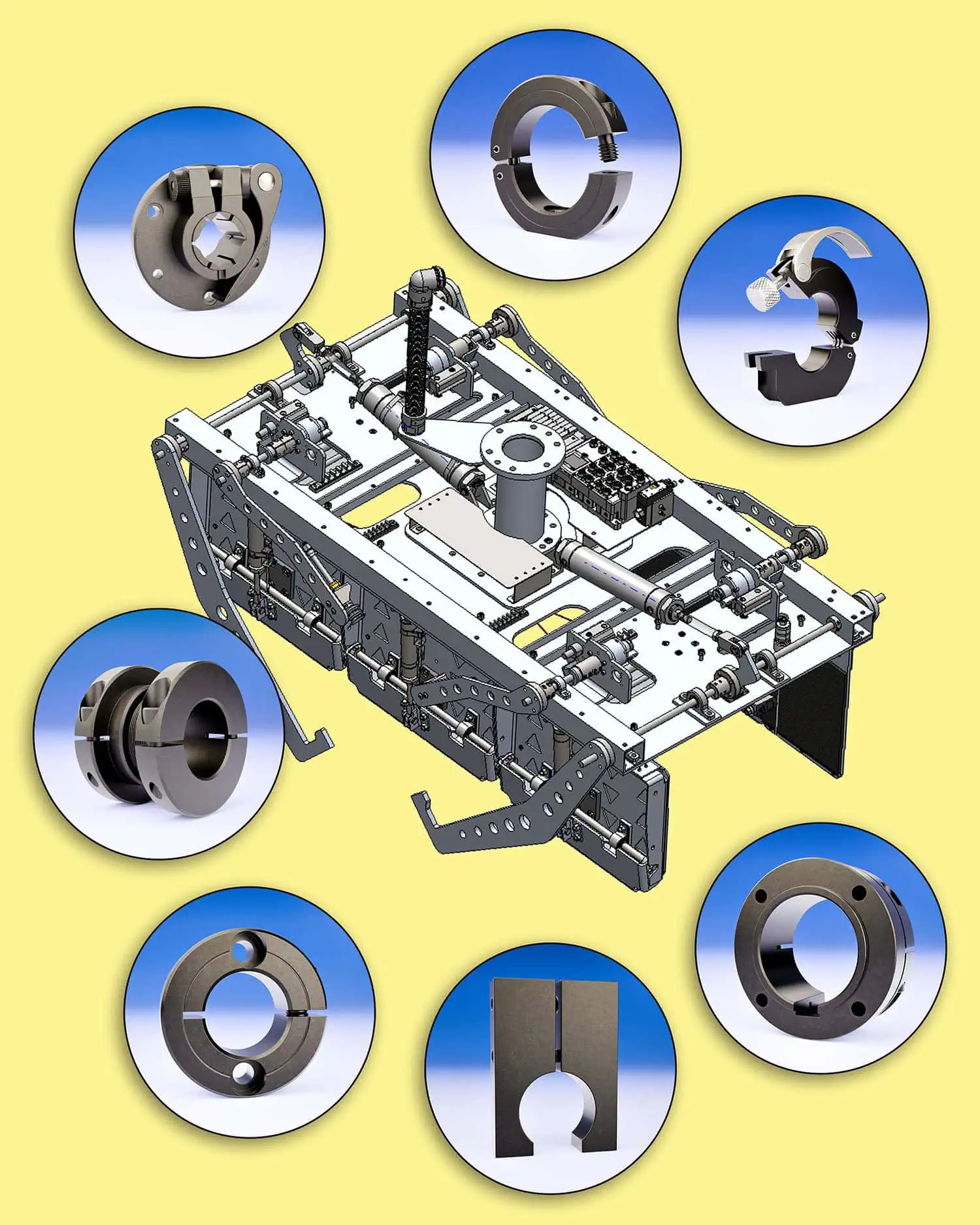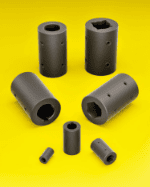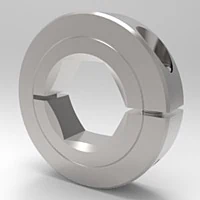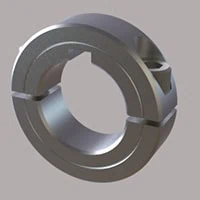Custom-Designed Shaft Components for OEMs
Leave a CommentFor OEM applications, standard shaft components may not always be the best fit. Standard options may have long lead times or not be available in the right size, material, or coating. To solve this challenge, OEMs often turn to customized solutions.
As a precision OEM supplier, Stafford Manufacturing specializes in quality products that meet your unique application requirements. Our custom-designed shaft components help OEMs obtain all of the features they need, without having to compromise on performance.
The Advantages of Customized Shaft Components
Customized shaft components offer numerous benefits to OEMs compared to standard options. These include:
- Enhanced performance. OEMs have specific dimension, tolerance, and performance requirements. Custom-designed shaft collars and couplings are tailored to your exact needs to improve your product’s overall efficiency, durability, and accuracy.
- Cost savings. Custom shaft component designs are optimized to minimize waste, reduce assembly time, and lower costs overall.
- Improved reliability. Since custom components match your specific requirements, they operate seamlessly with your system’s other elements, reducing the risk of failure and extending system longevity.
- Reduced time-to-market. Customization streamlines the development process, improves manufacturability, and accelerates your product launch.
The Stafford Manufacturing Advantage for OEM Parts
Stafford Manufacturing has been a trusted source for fast and affordable OEM parts since 1975. We meet demanding industry needs with custom products that match your specifications and standards. Whether you need to design a new component from scratch or modify a standard product, Stafford has the experience and resources to deliver your finished parts quickly and easily.
Standard Component Modification
While we offer an extensive catalog of standard parts, these options may not be an ideal fit. If you’ve found a product that is similar to your needs, our team can easily modify it to match your specifications. Some of the most common modifications we make to standard components include:
- Flange modifications
- Custom configurations for shaft-extenders and couplings
- Modified bores
- Modified outside diameters
Fully Customized Components
In addition to component modification capabilities, Stafford offers completely customized shaft components that adhere to your unique specifications. This allows customers to find a component that fits their exact application.
Wide Variety of Materials
We work with an extensive variety of materials to create durable products capable of withstanding any environmental challenge. Some of the most common materials we work with include:
- Alloy steels
- Aluminum, with anodizing in bright colors
- Brass
- Bronze
- Delrin
- High-temp alloys
- Nylon
- Stainless alloys
- Titanium
Surface Treatments
Surface treatments improve product performance, durability, and appearance. We offer:
- Anodizing
- Hardening
- Laser etching
- Painting
- Plating
The Benefits of Choosing Stafford
Stafford Manufacturing is your one-stop shop for quality, custom shaft components. Our team has decades of experience supporting the OEM industry, and we work closely with customers to develop a product that matches all of your project requirements. When you partner with us for your custom shaft component needs, you’ll gain access to the following benefits:
- Expert design and prototyping. Our engineers collaborate closely with your team to create customized designs and prototypes.
- Quality manufacturing and testing. We implement rigorous quality control and testing procedures to ensure the highest standards. We also offer 3D models for proof-of-concept testing.
- Fast turnaround and flexibility. Whether you only need one component or large production quantities, Stafford works quickly to transform your idea into an expertly manufactured product. We answer RFQs in 24 hours or less.
- Quality you can trust. We pride ourselves on exceeding customer expectations. As an ISO 9001:2015 certified business, we deliver exceptional quality products that match your specifications.
OEM Applications for Custom Shaft Components
Our customized shaft collars and couplings solve a variety of challenges, including compatibility issues with conveyor components, packaging systems, and mechanical drives. They can be used in a variety of consumer and industrial OEM applications, such as:
- Assembly
- Automation
- Renewable energy
- Pumps & fluid power
- Linear motion
- Packaging
- Food processing
- Medical Devices
- Material handling
- Motion control
Contact Us for Custom Shaft Collars & Couplings for Your OEM Needs
Custom-designed shaft collars and couplings allow OEMs to overcome application-specific challenges while meeting their production timeline goals. At Stafford Manufacturing, we offer all the resources you need to bring your design idea to life, quickly and affordably. Review our full custom manufacturing capabilities on our website or view our product catalog to learn more about how we can assist you. To get your next project started, contact us or request a quote today.

